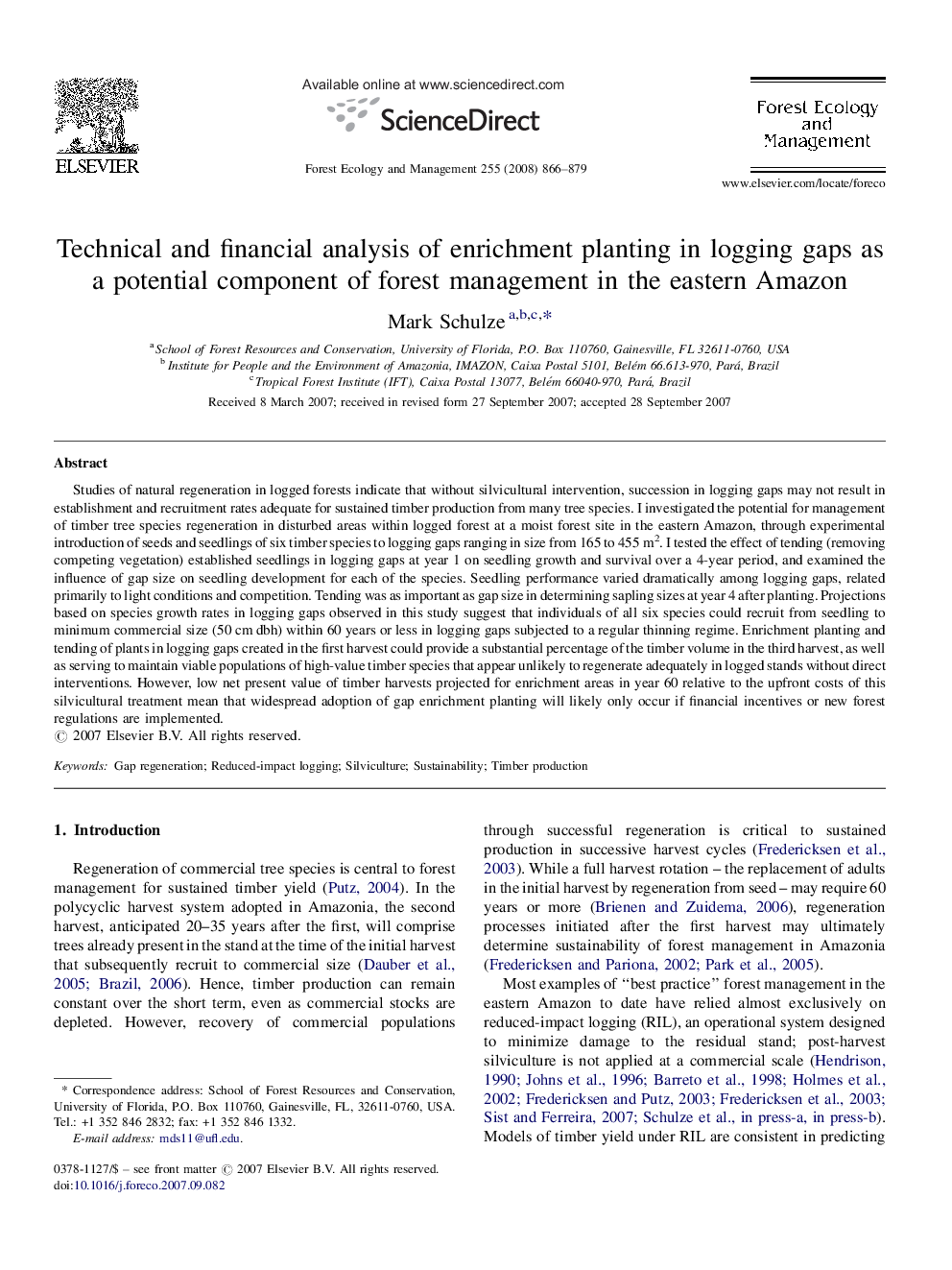| Article ID | Journal | Published Year | Pages | File Type |
|---|---|---|---|---|
| 89864 | Forest Ecology and Management | 2008 | 14 Pages |
Studies of natural regeneration in logged forests indicate that without silvicultural intervention, succession in logging gaps may not result in establishment and recruitment rates adequate for sustained timber production from many tree species. I investigated the potential for management of timber tree species regeneration in disturbed areas within logged forest at a moist forest site in the eastern Amazon, through experimental introduction of seeds and seedlings of six timber species to logging gaps ranging in size from 165 to 455 m2. I tested the effect of tending (removing competing vegetation) established seedlings in logging gaps at year 1 on seedling growth and survival over a 4-year period, and examined the influence of gap size on seedling development for each of the species. Seedling performance varied dramatically among logging gaps, related primarily to light conditions and competition. Tending was as important as gap size in determining sapling sizes at year 4 after planting. Projections based on species growth rates in logging gaps observed in this study suggest that individuals of all six species could recruit from seedling to minimum commercial size (50 cm dbh) within 60 years or less in logging gaps subjected to a regular thinning regime. Enrichment planting and tending of plants in logging gaps created in the first harvest could provide a substantial percentage of the timber volume in the third harvest, as well as serving to maintain viable populations of high-value timber species that appear unlikely to regenerate adequately in logged stands without direct interventions. However, low net present value of timber harvests projected for enrichment areas in year 60 relative to the upfront costs of this silvicultural treatment mean that widespread adoption of gap enrichment planting will likely only occur if financial incentives or new forest regulations are implemented.
